As India moves towards modernization, many of the old handicrafts are being lost. In an effort to save them, the government offers incentives to artisans to practice some of the old ways of making things.
|
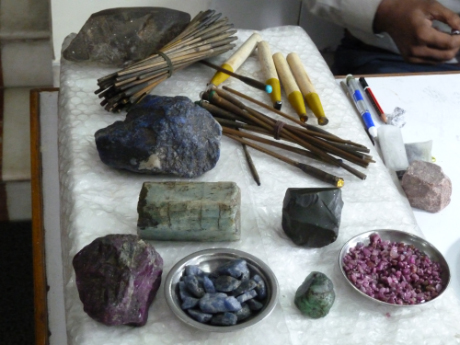 |
 |
Precious stones have long been associated with India and this tradition continues today. There is also a thriving business in making jewelry from semi-precious stones, which are also abundant.
|
The jewelry, which is hand-made, is notable not only for the fine materials but the workmanship that goes into it. |
 |
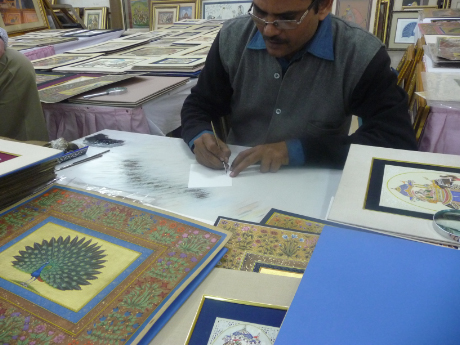 |
Drawing is another art that has been practiced for centuries and has reached a very high art It is still done with the natural colors and natural hair brushes.
|
Each artisan in this gallery works independently and creates artworks from traditional patterns and from his own imagination. Some are extremely complex. |
 |
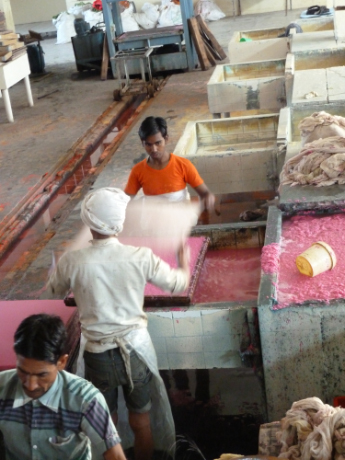 |
An elephant drawn on recycled shipping paper (complete with seal) makes a nice addition to our decor.
|
Hand-made paper is another craft that is dying out. The paper is made from rags that are sorted by color so that their dyes produce the color of the paper. |
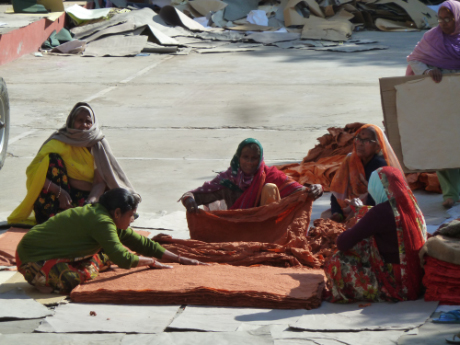 |
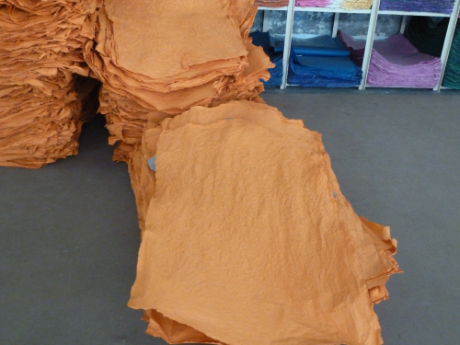 |
After the sheets are formed women lay them out to dry in the sun and then stack them up.
|
The resulting paper is wrinkled but can be ironed to give it a smooth finish. |
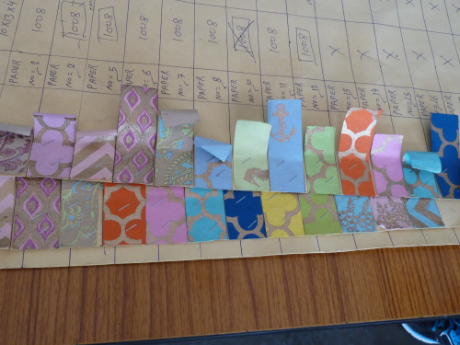 |
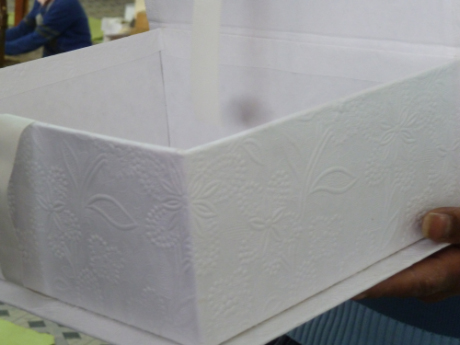 |
| The finished paper is stamped with designs and made into bags, notecards, etc. |
Some of the paper is embossed rather than stamped, to create a more luxurious item, like this box used for wedding gifts.
|
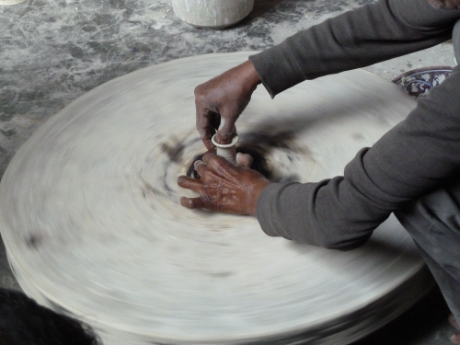 |
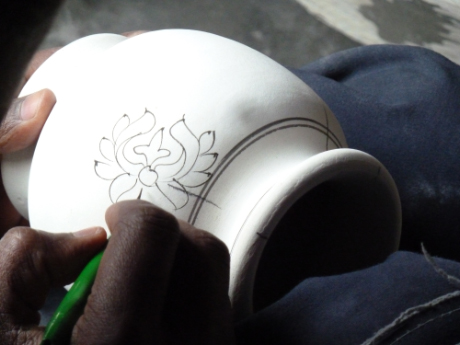 |
| Like many cultures, India has a tradition of pottery making, although it is not much practiced today. |
After being formed in the wheel or pressed out as tiles, the pottery is decorated, usually with floral or animal motifs, and then glaze is applied to the rest.
|
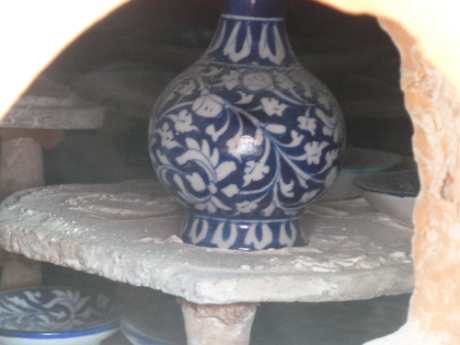 |
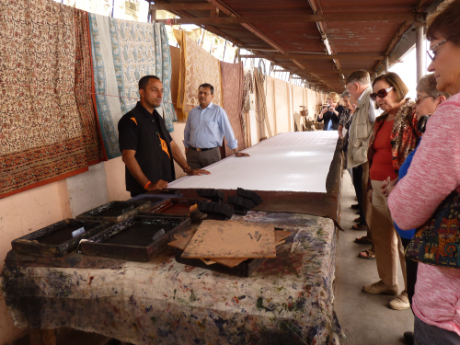 |
After firing the pottery is known, reasonably enough, as Jaipur blue pottery. Most of the pottery produced today is tiles and they can include many colors beyond the basic blue.
|
Block-printed fabrics are another small-scale craft that produces beautiful, colorful fabrics. |
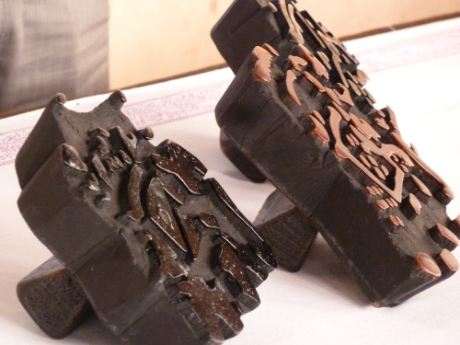 |
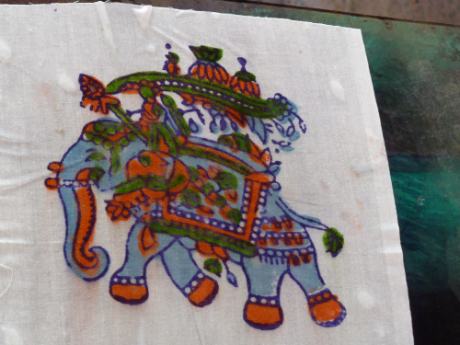 |
| Designs are created by overlaying blocks with different colors of inks, aligning them precisely to create the design. |
This elephant, for example, requires three blocks (blue, orange green). The artisans are so skilled that each of the colors aligns perfectly. [The slight blurring was caused when he "set" the piece by rinsing it in vinegar before the ink was quite dry.]
|
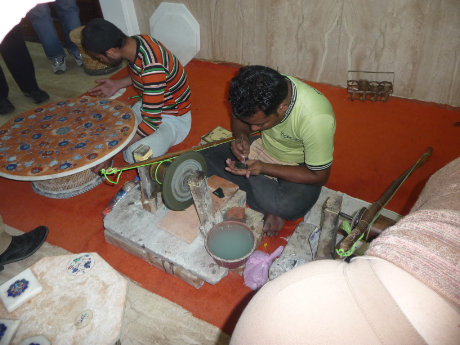 |
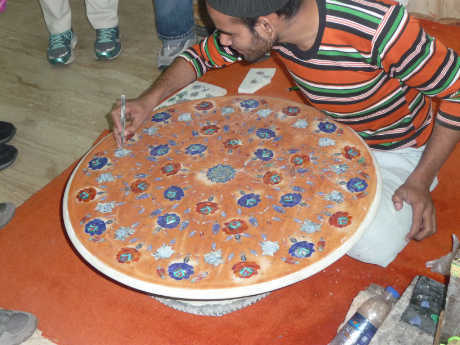 |
Inlaying marble with precious and semi-precious stones has been a major art in India since the seventh century AD. The Taj Mahal is decorated this way. Small chips of the gems must be sliced evenly into thin slices.
|
These slices are then attached into indentations carved into the marble [here covered with an orange wash to make the indentations easier to see] to create elaborate designs in all shapes and sizes. |
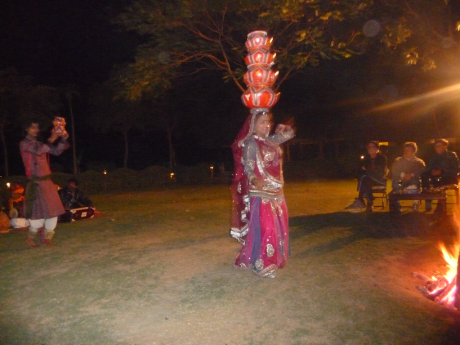 |
 |
| Dance is also a traditional art form and is very varied within India. We saw several dance shows, some of them quite informal and using traditional instruments, like the demonstration here at the rural retreat. The pots that she is balancing on her head are NOT attached to her head or to each other. |
Other shows were quite professional and took place in a theater with stages and backdrops. Girish called these the Bollywood version of folk dance because they used pop star recordings for music and were professionally choreographed. This show did give us a chance to see dances from many parts of India.
|






















